Comments / Questions (195)
![]() Fianna wrote:
Fianna wrote:
Hallo, ich möchte diese Jacke gerne in 122/128 stricken. Wie kann ich die Maschen umrechnen. Für eine schnell Antwort wäre ich Dankbar. Gruß fianna
10.07.2013 - 19:27DROPS Design answered:
Liebe Fianna, leider machen wir keine individuellen Umrechnungen einzelner Modelle. Vielleicht finden Sie ja in unserer Musterdatenbank ein anderes passendes Modell.
22.07.2013 - 07:30
![]() Andrea wrote:
Andrea wrote:
Dobrý deň, chcem sa spýtať, ako sa dopracujem k spodnej časti predného dielu, chápem, ako budem pridívať očká, bude sa mi tvoriť diagonála, ale neviem, ako to dotvoriť do obdĺžnika predného dielu, nechýba časť návodu? Podľa obrázka vidím, akoby sa to tam prištrikovalo z boku, ale netuším ako. Vďaka za pomoc i odpoved. Pekný večer. Andrea
03.05.2013 - 19:04Klara Papp wrote:
Would you be so kind to help me with the following. When you say "put the marker in the 2nd stitch" does this mean always this original 2nd stitch (constant) around which to increase or is it the 2nd stitch (moving) of each new row on the RS? Thank you very much and kind regards, Klara
27.02.2013 - 23:35DROPS Design answered:
Dear Mrs Papp, the marker should be kept in that sts, and inc will be done either side of this st, so always the "original" 2nd st. Happy knitting!
02.03.2013 - 10:49
![]() Libelle wrote:
Libelle wrote:
Ich habs hinbekommen,sieht schön aus,hat mich aber,als Wiedereinsteigerin beinahe umgebracht bis ich verstanden habe wie es funzt.Das Garn hat sich bei mir immer wieder einfach aufgedreht-ich empfinde es als falschrum gesponnen-ich musste oft alle Heiligen beschwören bis es geschafft war(das Jäckchen,nicht ich;))
27.02.2013 - 15:18
![]() Anne Mattila wrote:
Anne Mattila wrote:
Hei, Haluaisin vastauksen koskien etukappaleen palasta, joka kaavaan piirretty katkoviivalla. Missä on ohje tähän palaseen???? Odotan nopeaa vastaustanne.
29.01.2013 - 13:53
![]() Anne Mattila wrote:
Anne Mattila wrote:
Hei, Jälleen sama kysymys, missä on ohje etukappaleen kolmioon? Kaikki ohjeet löytyvät muuten, mutta etukappaleesta puuttuu palanen. Miten se tehdään? Olen kysynyt tätä myös Menita-liikkeestä, mutta sielläkin sanoivat, että ohjeessa on virhe. Voisitteko vihdoin vastata tähän kysymykseen????? Anne Mattila
28.01.2013 - 16:11
![]() Anne Mattila wrote:
Anne Mattila wrote:
Hei, Odotan yhä vastaustanne koskien etukappaleen kolmiota, josta ei ohjeessa puhuta ollenkaan. Kävin liikkeessä, josta langat on ostettu, mutta he totesivat saman. Voitteko vastata mahdollisimman pian!
24.01.2013 - 11:04DROPS Design answered:
Hei! Tämä katkoviiva näyttää mistä vaate taitetaan, ennen kuin työ ommellaan yhteen.
27.01.2013 - 13:15
![]() Anne Mattila wrote:
Anne Mattila wrote:
Hei, Odotan yhä vastaustanne koskien etukappaleen kolmiota, josta ei ohjeessa puhuta ollenkaan. Kävin liikkeessä, josta langat on ostettu, mutta he totesivat saman. Voitteko vastata mahdollisimman pian!
24.01.2013 - 11:04
![]() Anne Mattila wrote:
Anne Mattila wrote:
Hei, Odotan yhä vastaustanne koskien etukappaleen kolmiota, josta ei ohjeessa puhuta ollenkaan. Kävin liikkeessä, josta langat on ostettu, mutta he totesivat saman. Voitteko vastata mahdollisimman pian!
24.01.2013 - 11:03
![]() Anne Mattila wrote:
Anne Mattila wrote:
Hei! Mistä tuo etukappaleen kolmio muodostuu, joka kuvaankin piirretty katkoviivalla? Toinen etukappale muuten valmis, mutta tuo kolmion ohje ikäänkuin puuttuu?
20.01.2013 - 20:45
Tamzyn#tamzynjacket |
||||
 |
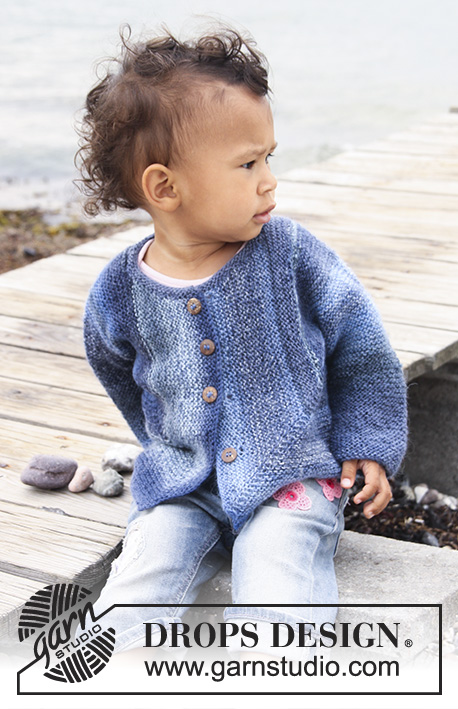 |
|||
Knitted domino jacket in garter st for baby and children in DROPS Delight
DROPS Baby 20-15 |
||||
|
INCREASE TIP: Inc 1 st in each side of marker by making 1 YO. Work YO twisted on next row (i.e. knit in back loop of st instead of front loop) to avoid holes. ---------------------------------------------------------- JACKET: Work the piece sideways. Work 2 pieces and finish by sewing pieces tog in the back. Work the pieces from the sleeve towards the mid of jacket. RIGHT HALF: Worked back and forth on circular needle. Cast on 36-38-40 (40-42-44) sts on circular needle size 3 mm with Delight. K back and forth on all rows until completed (= garter st). REMEMBER THE KNITTING TENSION! AT THE SAME TIME when piece measures 6-6-5 (5-6-6) cm, inc 1 st in each side, repeat the inc on every 8th row a total of 6-7-9 (11-13-14) times = 48-52-58 (62-68-72) sts. Work until piece measures 17-19-20 (25-29-33) cm – adjust so that the last row is worked from WS. BODY: K 1 row (= RS), at end of row cast on 41-43-50 (53-58-60) sts (= towards the back) = 89-95-108 (115-126-132) sts. NOW MEASURE PIECE FROM HERE! K 1 row, turn, insert a marker in the 2nd st on needle from RS (= in right side). Continue – AT THE SAME TIME inc 1 st on each side of the st with marker every other row a total of 38-40-46 (48-50-52) times – SEE INCREASE TIP. AT THE SAME TIME when piece measures 8.5 - 9 - 10.5 (11 - 12 - 13) cm work only over the last 60-65-74 (79-86-91) sts in the left side seen from RS (= back piece), slip the remaining sts on a stitch holder. BACK PIECE: Work until piece measures 13-14-16 (17-18-19) cm (from where back piece sts was cast on), cast off. FRONT PIECE: Put sts from stitch holder back on needle but leave 9-10-10 (10-12-12) sts towards the back on the stitch holder for neckline. Continue inc on every other row – AT THE SAME TIME dec 1 st towards the neck (= towards sts on stitch holder) on every 4th row a total of 6-7-7 (7-7-7) times. AT THE SAME TIME when piece measures 14-15-17 (18-19-20 cm (from where inc on front piece started and towards mid front) cast off for 3-4-4 (5-5-5) button holes as follows (from neck, i.e. from WS): K 2, cast off 2 sts, * K 12-9-11 (9-10-10) sts, cast off 2 sts *, repeat from *-* a total of 2-3-3 (4-4-4) times, K rest of row. On next row cast on 2 new sts over the cast off sts. After all inc and dec there are 90-93-109 (115-121-126) sts on the needle. When finished with inc on right side, cast off 51-52-62 (66-70-74) sts from the neckline and down the front band of jacket (cast off from WS) = 39-41-47 (49-51-52) sts left on needle. K back and forth over these sts for approx. 1-1-2 (2-3-3) cm (fold piece at the shoulder and check that the front piece is the same length as back piece). Cast off. LEFT HALF: Work as right half but without button holes – this piece is assembled with wrong side out. ASSEMBLY: Put the 2 pieces towards each other and sew tog mid back – sew edge to edge to avoid a chunky seam. Fold the jacket and sew underarm and side seams in front loop of outermost sts. Sew on buttons. NECKLINE: Knit up 55 to 80 sts (including sts on stitch holder) around the neck on circular needle size 3 mm with Delight. K 3 rows back and forth, cast off. |
||||
Diagram explanations |
||||
|
||||
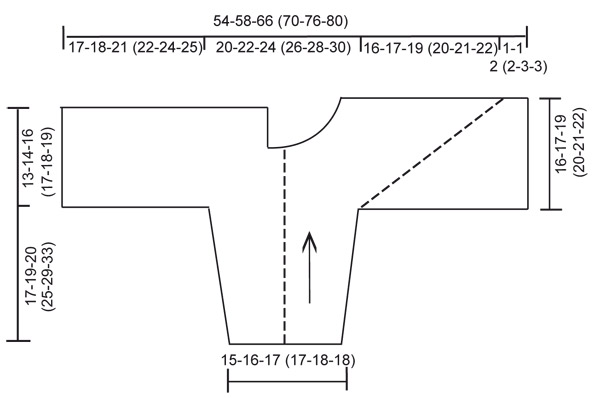 |
||||
Have you finished this pattern?Tag your pictures with #dropspattern #tamzynjacket or submit them to the #dropsfan gallery. Do you need help with this pattern?You'll find 8 tutorial videos, a Comments/Questions area and more by visiting the pattern on garnstudio.com. © 1982-2025 DROPS Design A/S. We reserve all rights. This document, including all its sub-sections, has copyrights. Read more about what you can do with our patterns at the bottom of each pattern on our site. |
||||







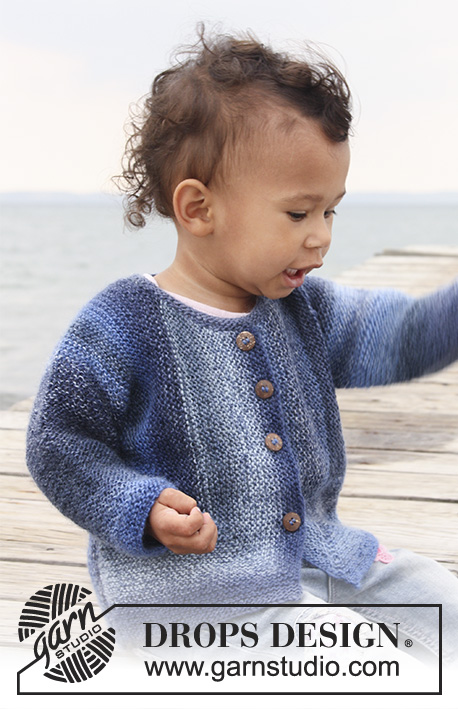


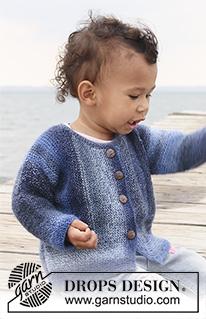



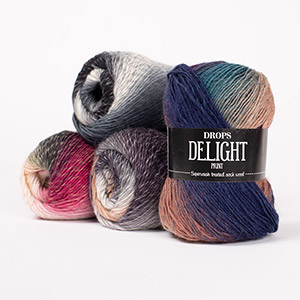


























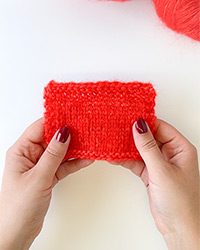
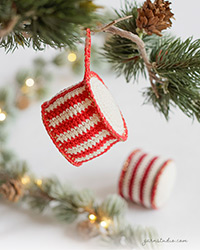




Post a comment to pattern DROPS Baby 20-15
We would love to hear what you have to say about this pattern!
If you want to leave a question, please make sure you select the correct category in the form below, to speed up the answering process. Required fields are marked *.